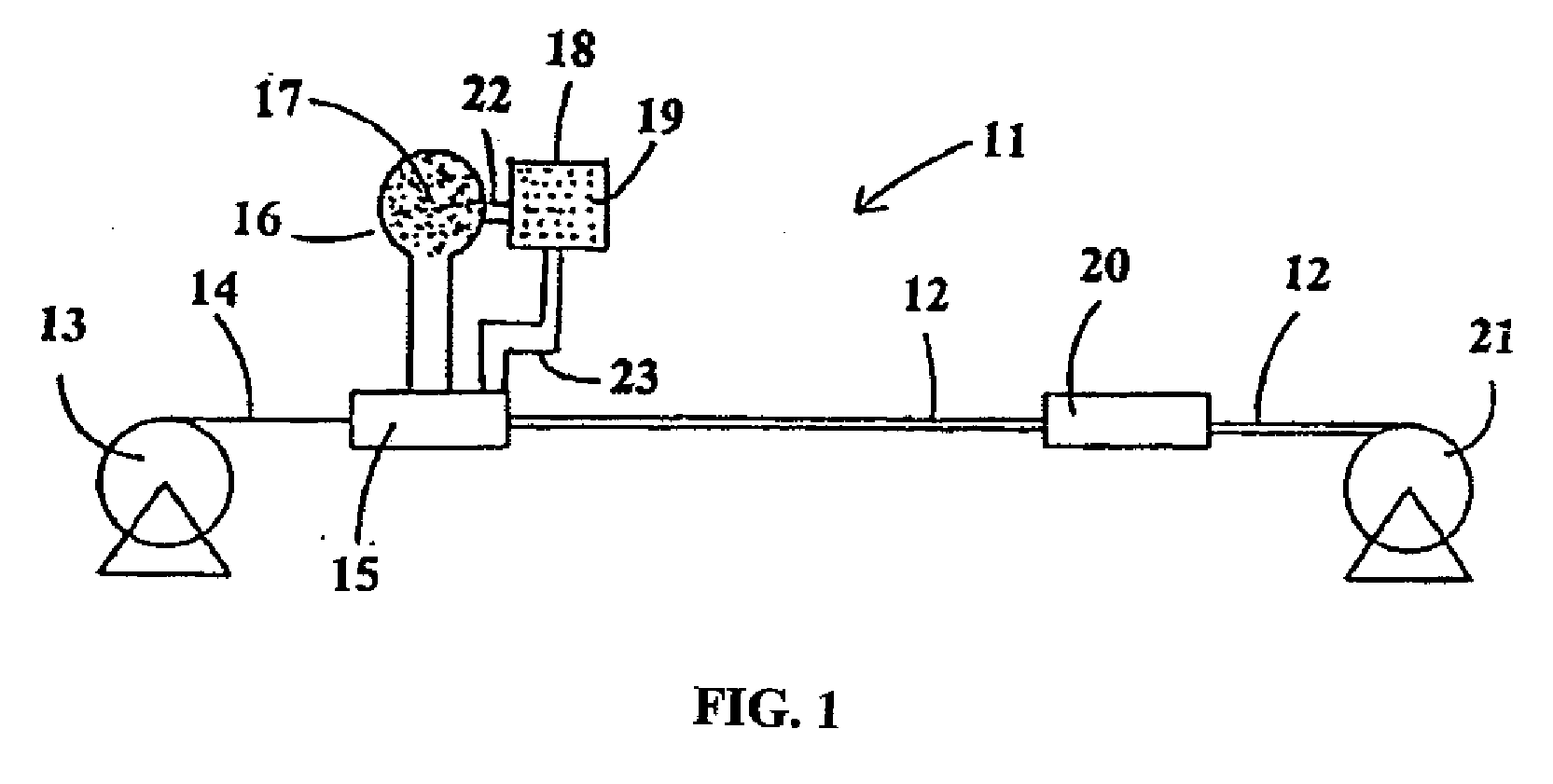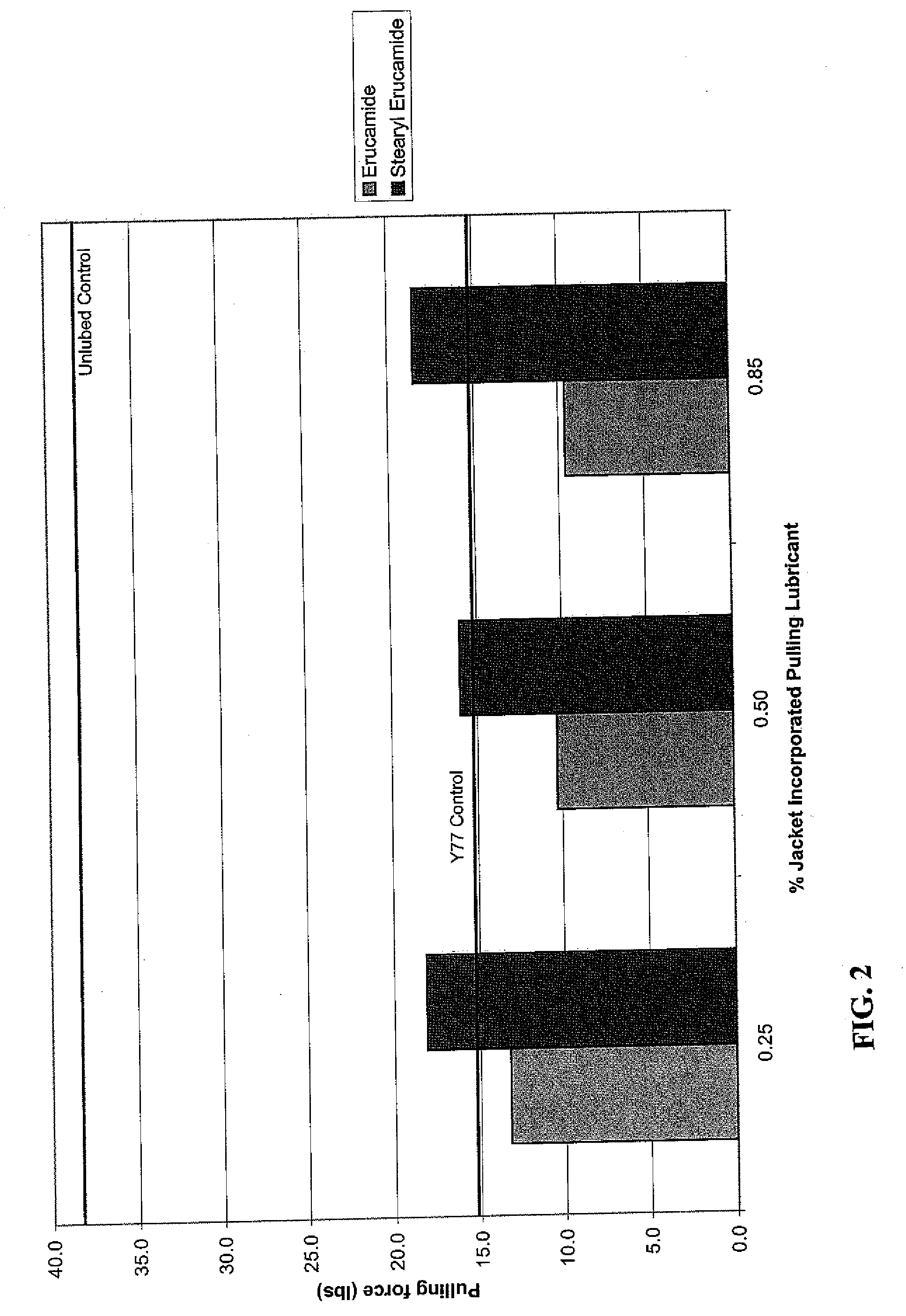Electrical cable having a surface with a reduced coefficient of friction
a technology of surface friction and electric cables, applied in the field of electric cables, can solve the problems of requiring a large pulling force, physical damage, degradation of cables, etc., and achieve the effect of reducing the coefficient of friction of the exterior sheath surface, reducing the surface coefficient of friction, and minimizing the required installation pulling for
- Summary
- Abstract
- Description
- Claims
- Application Information
AI Technical Summary
Benefits of technology
Problems solved by technology
Method used
Image
Examples
Embodiment Construction
[0019] Referring initially to FIG. 1, there is depicted typical equipment 11 for manufacturing electrical cable 12 in accordance with a process of the present invention. In this example, the outer sheath of the cable is of extruded PVC material. The equipment 11 may include a reel 13 which supplies conductor wire 14 to an extruding head 15. In flow communication with the extrusion head is a tank 16 of PVC pellets 17. These pellets have preferably been pre-compounded with a processing lubricant. A tank 18 with the desired pulling lubricant 19 is adapted to be in flow communication with the tank 16 by way of conduit 22, thus enabling the mixing of the pulling lubricant with the PVC pellets 17, the mixture thereafter introduced into the extruder. Alternatively, the tank may be adapted to be in fluid communication with the extruder or extrusion head 15, by way of conduit 23, downstream from the point of entry of the PVC pellets 17, thus allowing the pulling lubricant to mix with the PVC...
PUM
| Property | Measurement | Unit |
|---|---|---|
| angle | aaaaa | aaaaa |
| angle | aaaaa | aaaaa |
| pulling angle | aaaaa | aaaaa |
Abstract
Description
Claims
Application Information
 Login to View More
Login to View More - R&D
- Intellectual Property
- Life Sciences
- Materials
- Tech Scout
- Unparalleled Data Quality
- Higher Quality Content
- 60% Fewer Hallucinations
Browse by: Latest US Patents, China's latest patents, Technical Efficacy Thesaurus, Application Domain, Technology Topic, Popular Technical Reports.
© 2025 PatSnap. All rights reserved.Legal|Privacy policy|Modern Slavery Act Transparency Statement|Sitemap|About US| Contact US: help@patsnap.com



